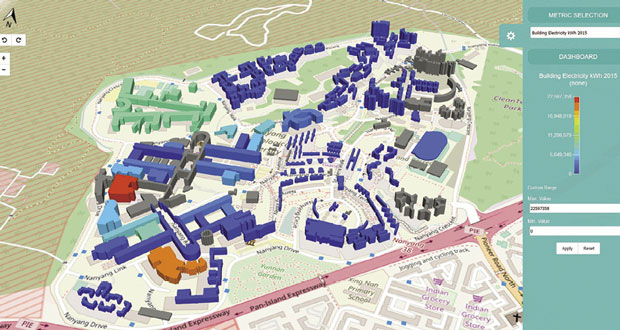Sadaf Askari, ICL Partner Business Manager at IES explains the benefits to FMs in bringing digital innovation into ESG strategies
Robust ESG (Environmental, Social and Governance) strategies are important not just to curb global warming, but to reflect an increasing awareness by consumers, partners and investors that net-zero buildings also have a financial benefit.
Facilities managers can turn to digital innovation to assess the carbon efficiency of a single building or an entire portfolio, to see where changes need to be made to reduce the carbon footprint. One area that has had some incredibly beneficial results is Digital Twins. This technology allows building managers to see a digital or virtual version of their facilities to assess and improve their efficiency and sustainability status.
CREATING THE WORLD’S GREENEST CAMPUS
Digital Twins are arguably the key to decarbonising the built environment. These virtual replicas are fully scalable from a single building to an entire city and respond and behave just like their real-world counterparts. Delivering the data-driven information needed to uncover significant energy, carbon, capital and operational savings, also takes resource use, transport and socioeconomic factors into account.
With the improved efficiency afforded to buildings through Digital Twin analysis, organisations can not only improve the eco-credentials of their buildings but also help to make financial savings.
Demonstrating these savings is Nanyang Technological University’s (NTU) 250-hectare EcoCampus in Singapore. NTU wanted to understand at campus level which energy-saving solutions would perform best and identify the optimum scale and location for its deployment. Digital Twin technology enabled NTU to see a full visualisation of its 21 campus buildings complete with virtual testing for building performance optimisation.
A masterplanning (iCD) model of the EcoCampus, detailing energy signatures for each building, was created and used as a baseline to simulate and analyse testbed technologies. These ranged from building envelope improvements, to light sensors, chiller optimisation and smart plugs that ensure appliances are switched off after hours.
During the implementation phase, the best testbed solutions were put into practice by calibrating operational data from utilities and Building Management Systems (BMS) into virtual models. Data was gathered and analysed to investigate faults across the campus’s 21 buildings, for example, high or low CO2 levels, unstable off coil temperatures and faulty energy meters.
A selection of the proposed energy-saving interventions were simulated using the digital twin to determine potential savings, helping to uncover 31 per cent average energy savings, 9.6kt of carbon savings and a total cost saving of approximately $4.7million.
DESIGNING THE WORLD’S FIRST NET-ZERO FAST-FOOD RESTAURANT
The US’s first net-zero designed fast-food restaurant – McDonald’s at Walt Disney World Resort, Orlando, combines modern architecture with technology to generate enough energy on-site to cover its energy needs on a net annual basis.
WSP used IES’s Virtual Environment software – part of its Digital Twin technology suite – to conduct detailed and extensive energy analysis to inform the design and ensure it was on track for net-zero targets.
With the high volume of meals being served, even the heat gain from the food has an impact on the space. The team virtually tested natural ventilation options using MacroFlo resulting in the eventual implementation of a hybrid HVAC system that uses standard VRF cooling as well as natural ventilation.
By gathering data from another McDonald’s, a schedule for each piece of equipment could be created in the Virtual Environment, revealing that grills and fryers were not run all day, despite it being a 24-hour premise. Using real-time data and translating it into more efficient scheduling in the model facilitated a lower energy usage and also gave understanding of the most energy-intensive equipment.
OPERATIONAL DASHBOARDS
One of the greatest benefits of embedding Digital Twins within ESG strategies is the ability to leverage the ever-growing Internet of Things (IoT) infrastructure to effectively gather, manage and interrogate operational data across your building or portfolio, in a single pane view.
In the case of one UK city council, the energy management team were able to use IES Digital Twin technology to facilitate centralised data monitoring, analysis and proactive maintenance across a portfolio of 35 public buildings.
The physics-based simulation, machine learning and AI capabilities of the Digital Twin make it possible to learn from historical data patterns to detect anomalies and create alerts to notify of any unexpected behaviours. This enables energy and FM teams to be much more proactive in their maintenance approach, prioritising repairs and, in some cases, predicting faults before they happen.
Digital Twins present an all-encompassing solution to analyse and address such considerations, alongside energy and carbon targets, providing yet another compelling reason to bring the technology central to your facility’s ESG strategy.





